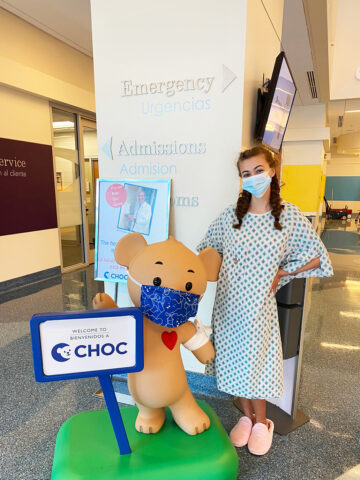When hernias in children don’t close by themselves, surgeons can repair the protrusion caused by an organ or tissue pushing through an opening or a weak spot in the abdominal wall, a CHOC Children’s pediatric general surgeon says.
A common procedure, hernia repair is typically an outpatient surgery, meaning the child can go home the same day as the surgery after a few hours of recovery, Dr. Troy Reyna says.
An infant younger than 3 months, however, would be hospitalized overnight as a precaution, he says.
“During surgery to fix a hernia, we’re closing that little hole that causes the bulge,” Dr. Reyna says. “We can often do laparoscopic surgery, which means there is a tiny incision using a camera to direct the sutures and needles to the abdominal wall. With baby boys, we usually will make an incision, but it’s small.”
The operation is relatively short, usually taking 30 to 40 minutes, he says.
Parents are most often worried about their child undergoing general anesthesia for the surgery, but Dr. Reyna assures parents that the anesthesiologist treating their child at CHOC specializes in working with babies and children.
“This is what they do,” he says. “They know that children are not little adults and have a totally different anatomy.”
If they haven’t closed already, umbilical hernias can be fixed when the child is 2 or older, Dr. Reyna says. A child with an inguinal hernia should have surgery within one to three weeks of diagnosis to prevent possible complications to other organs, he adds.
Parents who suspect their child has a hernia should seek a medical evaluation from their pediatrician, Dr. Reyna recommends.
“I tell parents we don’t expect them to be medical experts but whenever their child has a lump or bump in an unusual place, feel free to ask about it,” he says. “The only silly question is the one that doesn’t get asked.”





